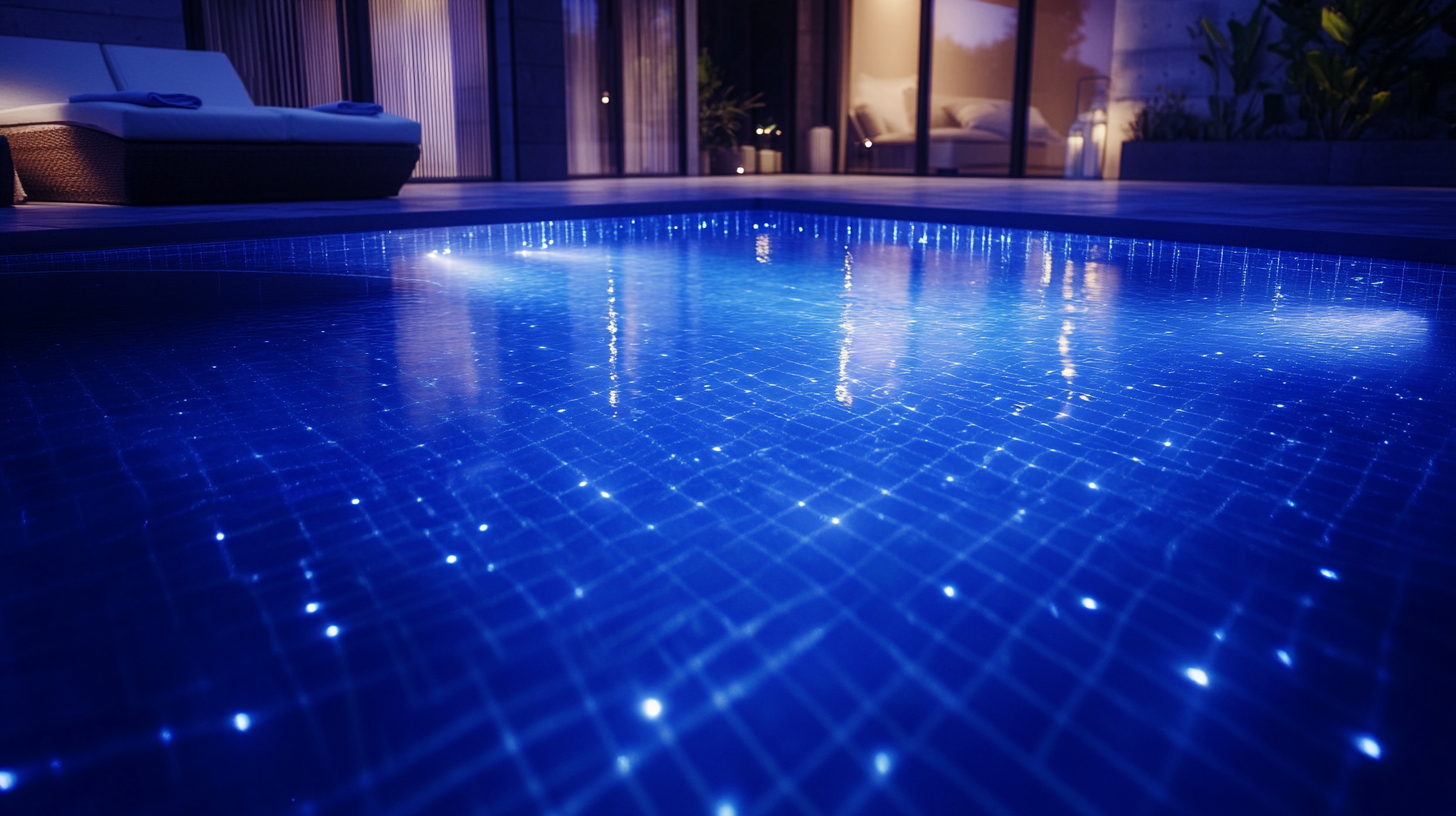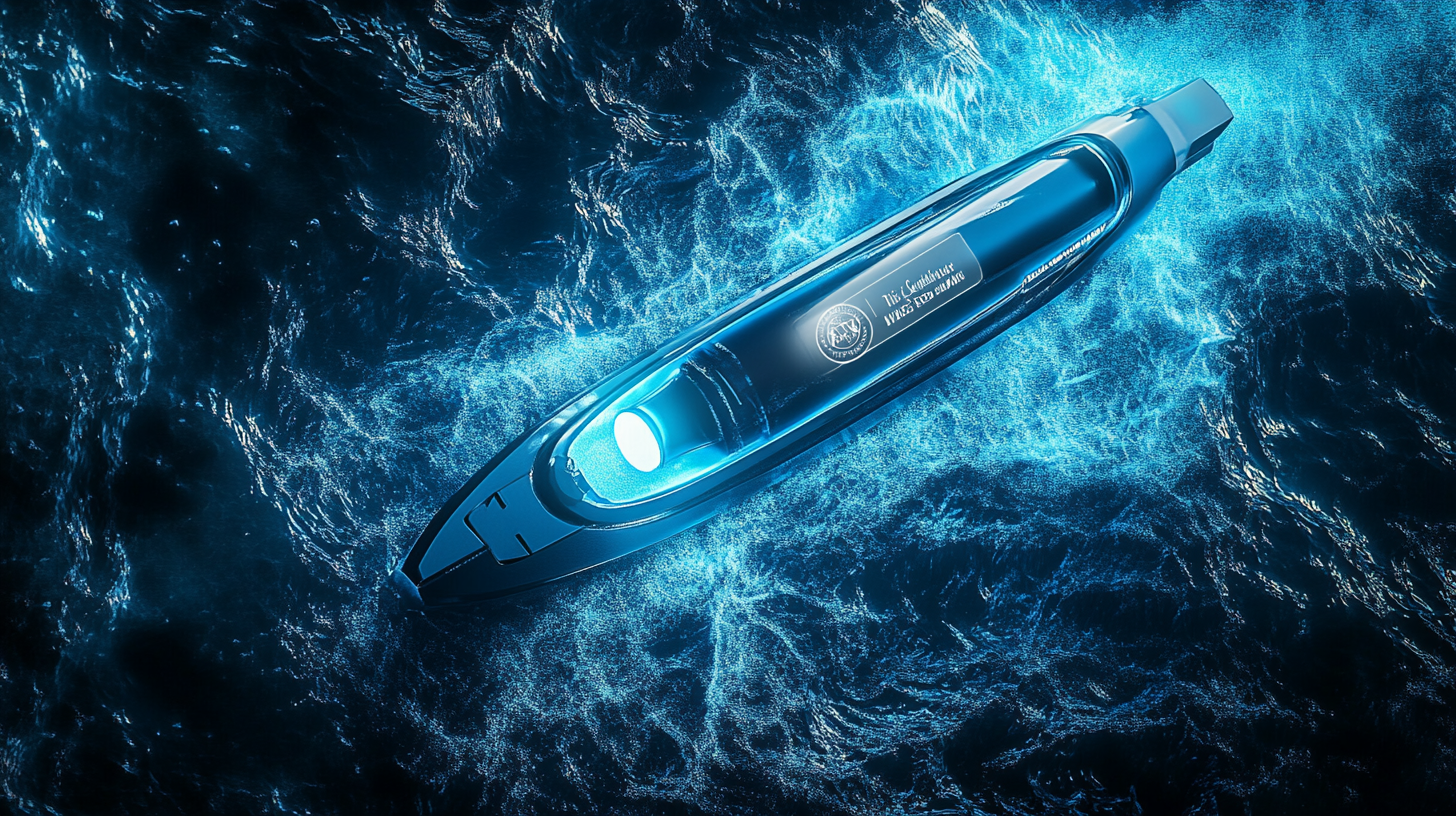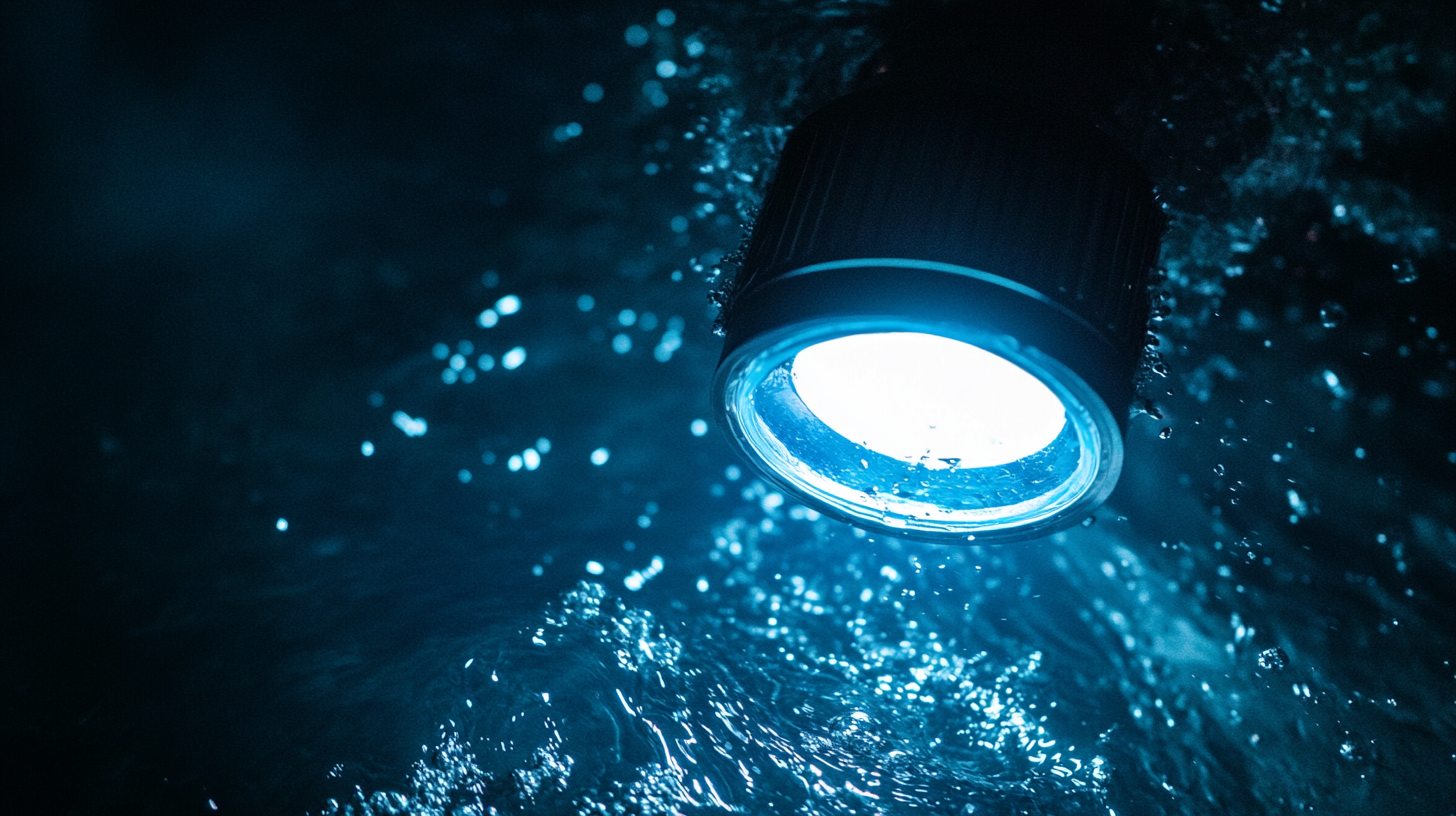Combining underwater pool lights with fiber optic lighting
Underwater pool lights are essential not just for enhancing the aesthetics of your pool but also for ensuring safety, especially for nighttime swims. These lights, typically housed in waterproof niches along the sidewalls, offer a beautifully illuminated swimming area that can transform the look and feel of your entire outdoor space. With the right lighting, you can create a soothing ambiance or even highlight specific features of your pool, such as waterfalls or unique tile patterns. However, not all underwater lights are created equal. Modern solutions such as LED lights are becoming increasingly popular compared to their traditional incandescent counterparts, not only for their brightness but for their energy efficiency as well.
When combining underwater pool lights with the latest innovations like fiber optic lighting, you’re not just adding light—you’re introducing versatility and design flexibility. Unlike standard lighting, fiber optics allow you to create starry effects on the pool floor or even outline the pool’s edges with subtle but striking illumination. You can also change the color of the lights with a push of a button, making it incredibly easy to switch up the mood. Better yet, fiber optic lighting is often far safer due to the lack of electrical current running directly through the system. This makes it an intriguing option for anyone looking to seamlessly introduce dynamic underwater lighting features while ensuring the highest level of pool safety.
The advantages of fiber optic lighting
One of the biggest advantages of fiber optic lighting is the separation between the light source and the actual lighting points. Unlike traditional pool lights where the bulbs are immersed in the water, the light in a fiber optic setup is transmitted through fiber cables from a dry, remote location. This creates not only a distinct safety advantage but also reduces the need for complex waterproofing around sensitive electrical components. With the light source safely housed above ground, you get all the glow and none of the risk, especially in a water-heavy environment like a swimming pool.
Beyond just safety, fiber optic lighting also ensures easy maintenance. Since the light source itself is located away from water exposure, it’s protected from early wear and tear. You won’t need to worry about replacing bulbs underwater—a task that can be tricky and time-consuming with conventional underwater pool lights. Instead, if you ever need to swap out or repair components, everything is easily accessible and dry.
Additionally, fiber optic lighting offers unmatched aesthetic flexibility. When you’re combining fiber optics with regular pool lights, you’ll notice how the crisp, well-directed light creates stunning effects. Starry patterns, illuminated pathways, or even subtly glowing edges around steps or pool ledges can give your pool an artistic splash. And let’s not forget about the variety of lighting options! Fiber optic systems allow for color-changing features, offering you the ability to set the mood of your pool area with just a flick of a switch—perfect for themed parties or romantic evening swims.
Another less-talked-about benefit is the energy efficiency of fiber optic lighting. Since the light source is generally a high-intensity single bulb or LED, it consumes a lot less power compared to having multiple individual lights plugged in around the pool area. Coupling this with the already energy-efficient LED bulbs often used in fiber optic systems means you’ll save on energy bills while still enjoying beautifully lit poolscapes.
How to integrate fiber optics with pool lighting
To successfully implement a blend of traditional underwater pool lights and fiber optic lighting, you’ll need to consider both the technical and the aesthetic sides of the project. This integration starts with identifying where you want to position each lighting element. The placement of traditional pool lights should remain near the pool floor or sidewalls, typically housed in niches, where they can emphasize depth and cast a broad, even light. Meanwhile, fiber optic lighting can be used in a more decorative capacity. Installing fiber optic strands around the pool’s edges, on steps, or outlining water features allows for enhanced visual effects that can complement the broader illumination provided by standard underwater pool lights.
The most prominent feature of fiber optic lighting is its ability to transmit light from a remote location. This means that when you are combining these two lighting systems, you don’t need to worry about submerging sensitive electrical components. The key here is to locate the fiber optic light source, often called the illuminator, away from the pool—typically in a dry, isolated area like a pool equipment room. Fiber optic cables then guide the light into the water, creating a dazzling effect that seamlessly blends with the rest of your pool’s lighting. Whether you’re going for a gentle glow or a more dramatic statement, fiber optics allow for a wide spectrum of control, which is an important advantage when juxtaposed against the more fixed nature of traditional underwater pool lights.
A fiber optic system usually operates by connecting several strands to a single illuminator, which then channels the light through the fibers to create multiple points of illumination. When coupled with traditional underwater lighting, this opens up fascinating design opportunities. For instance, imagine a pool where the base and the surrounding walls are bathed in powerful beams of LED light, while the surface of the water and the edges shimmer with a subtle, starry outline thanks to fiber optics. Combining the two allows you to experiment with contrasts in light intensity, color, and positioning, enhancing visibility without sacrificing that special, luxurious glow that only fiber optics can provide.
Controlling the lighting setup is another area where fiber optics shine. Unlike underwater pool lights, which typically require individual color-changing LEDs to achieve various hues, fiber optic lighting allows you to experiment with color via the illuminator itself. Modern illuminators are equipped with color wheels or RGB LED technology, making it easy to shift between warm ambers for a relaxing evening to dynamic blues and greens for a lively pool party. You can combine this color-changing ability with the steady, high-visibility function of traditional underwater pool lights for a truly unique and versatile lighting system.
When planning this integration, a readily available control system is essential for both aesthetics and convenience. You can use a central control panel or even smartphone apps that regulate both fiber optic and standard pool lighting at once. Simplifying how both sources act in unison allows for better sync between these two technologies. For instance, while the base of the pool remains brightly lit by traditional pool lights, fiber optics can cycle through softer colors at a slower pace, contributing to an atmosphere that feels both modern and customizable.
Design ideas for combined lighting
To truly make your pool a standout feature in your outdoor space, combining underwater pool lights with fiber optic lighting opens up endless opportunities for creative, eye-catching designs. These two technologies, when used together, offer striking contrasts that elevate both the function and form of your pool. Here are several design ideas to inspire your next project.
Starry Night Pool Floor
One of the most popular effects you can achieve with fiber optic lighting is the “starry night” effect on the pool floor. This involves embedding the fiber optic cables in the pool’s floor or along its walls, which allows tiny but bright points of light to illuminate the pool from below. For a subtle yet enchanting touch, you can program the fiber optic lights to emit soft whites or gentle blues. This effect is especially mesmerizing when traditional LED underwater pool lights are placed at opposite sides of the pool to provide a luminous base. The contrast between the broader illumination of the underwater pool lights and the delicate twinkling of fiber optics creates a magical visual ambiance that transforms your pool area into a resort-like attraction.
Accentuating Water Features
If your pool has built-in water features such as waterfalls, bubblers, or fountains, fiber optic lighting can be used to enhance these elements in a striking way. By running fiber optic strands along the contours of these features, you can make water appear to glow as it cascades down, adding both motion and light to the scene. Traditional underwater pool lights can provide broader lighting around the main swimming area, while the fiber optics focus on accentuating the moving water. You might choose color-changing illuminators to make the water dance with shifting hues or keep it in a steady, clear glow for a more natural vibe.
Highlighting Steps and Ledges
Ensuring the safety and visibility of pool steps and ledges can be both practical and aesthetically delightful. Fiber optic lights can be strategically installed around the perimeter of each step or ledge. These low-profile lights not only add an extra layer of illumination to these necessary features but also create a dramatic, floating effect as the steps seem to be outlined by shimmering light. When combined with underwater pool lights installed in the walls of the pool, you get both focused safety lighting and an overarching glow that ties the whole design together. This is particularly useful in pools with dark bottom surfaces, where the contrast of light against shadow is more pronounced.
| Design Element | Lighting Solution | Effect on Pool Aesthetics |
|---|---|---|
| Starry Night Pool Floor | Fiber optic lighting embedded in pool floor | Creates a soft, twinkling light pattern on the pool floor, perfect for a serene nighttime atmosphere |
| Waterfall Features | Fiber optics outlining water features | Illuminates moving water, providing a luminous and dynamic appearance |
| Pool Steps and Ledges | Fiber optics around steps, LED underwater lights for broader glow | Outlines steps for safety while giving a floating effect with soft, ambient light |
Pool Perimeter Outlining
If you prefer clean, contemporary aesthetics, outlining your pool’s perimeter with fiber optic lighting serves as a sophisticated way to define your pool’s shape especially at night. This technique uses glow points spaced evenly along the edges, giving the pool a sleek, highlighted outline. While traditional underwater pool lights illuminate the water inside, fiber optics create a frame around the pool, emphasizing its design even when the water isn’t being used. For parties or relaxing evenings, color-changing fiber optic lighting can delineate pool boundaries in a way that’s both subtle and artistic.
Nighttime Landscapes: Pathways and Surrounding Areas
Don’t limit fiber optic creativity solely to the pool area. Incorporating fiber optics in the surrounding landscape, around patios, walkways, or even in small garden features, extends the lighting design outward and integrates your pool with the rest of your outdoor space. Running fiber optic strands along garden paths or around trees and plants creates an inviting, romantic atmosphere. Simultaneous use of traditional underwater pool lights in the pool gives depth and openness to the space, making the pool area the centerpiece amidst a softly illuminated background.
Themed Light Shows for Events
For those seeking highly customizable lighting for parties or events, combining pool lights and fiber optic lighting offers the unique ability to create themed light shows. Imagine celebrating events like the 4th of July, where your standard underwater pool lights remain a static bright blue, while fiber optic lighting cycles between red and white hues. Modern illuminators also offer built-in pattern modes, allowing you to automatically cycle through colors or even sync the display to music, creating a synchronized lightshow over the pool’s surface. This dynamic combination will enhance the celebratory mood while maintaining functionality and visibility.
Interactive Light Zones
Another fantastic design idea is to create “zones” within the pool where different types of lighting take center stage. For example, you could design the shallow end of the pool to be illuminated primarily by fiber optics, giving it a softer, more playful atmosphere. Meanwhile, the deep end would benefit from stronger, broader beams from traditional underwater pool lights, providing maximum visibility for swimmers diving or practicing in the deeper waters. This zoning approach allows you to control where and how illumination should be most intense.
By combining underwater pool lights and fiber optic lighting in thoughtful and creative designs, you can produce a custom lighting environment that is not only visually stunning but also perfectly suited to your functional and aesthetic needs. Whether you’re going for a soft glow, a rich color palette, or an interactive experience, the possibilities with these two lighting technologies are virtually limitless.
Maintenance and safety considerations
When it comes to maintaining and ensuring the safety of your lighting setup, combining underwater pool lights with fiber optic lighting actually simplifies many routine tasks while offering some unique advantages. Fiber optic lighting, for instance, requires minimal hands-on maintenance, largely because its light source—often an LED illuminator—is stored in a dry, safe place away from the pool. This means you’re less likely to encounter wear and tear commonly associated with traditional lighting systems that are directly exposed to water. With no electrical components submerged, you reduce the risk of water damage to the lighting system. Periodic cleaning of the fiber optic strands in the pool may be necessary to ensure they maintain their brightness, but this is a far simpler process compared to the challenges of replacing or repairing underwater pool lights submerged beneath the surface.
Meanwhile, maintaining traditional underwater pool lights involves occasional repairs that depend on the type of light you’ve installed. LED pool lights, for instance, tend to last significantly longer than older incandescent bulbs, but they aren’t entirely maintenance-free. Over time, seals, O-rings, and niches can break down or wear out due to constant exposure to moisture and pool chemicals. Performing regular checks of your pool lights helps ensure that all waterproofing materials remain intact to prevent water leaks, which could cause short circuits or damage the light housing.
From a safety perspective, fiber optic lighting is often hailed as the safer option, primarily because there are no electrical components in direct contact with water. The lack of direct electricity near the pool drastically reduces the chance of electrical failure or shock—an important consideration for family pools or those used frequently for recreational purposes. When combined with traditional underwater pool lights, which are designed with robust waterproofing standards, the overall risk remains low, provided all electrical units and lights are properly inspected and maintained.
Monitoring the overall health of your pool’s lighting system also means keeping an eye on its control units. Many modern pools use control panels or even smartphone apps to sync and adjust both fiber optic and traditional pool lights. These control systems occasionally need software updates or testing to ensure they continue to function as expected. If you notice any issues, such as flickering lights or delays in color changes, troubleshooting your control system should be your first step before investigating the physical lights themselves.
Lastly, regular cleaning of the lenses on your traditional pool lights will help maintain maximum brightness. Over time, calcium scaling, algae, and other debris can accumulate on the lens, reducing visibility and affecting the overall look of your pool. A simple routine of brushing the lights with a soft brush during regular pool maintenance should suffice in keeping them clean. As for fiber optic lighting, while they generally require less upkeep, inspecting the ends of each fiber optic strand to ensure they’re free from debris or damage will ensure that the light continues to shine as beautifully as intended.


